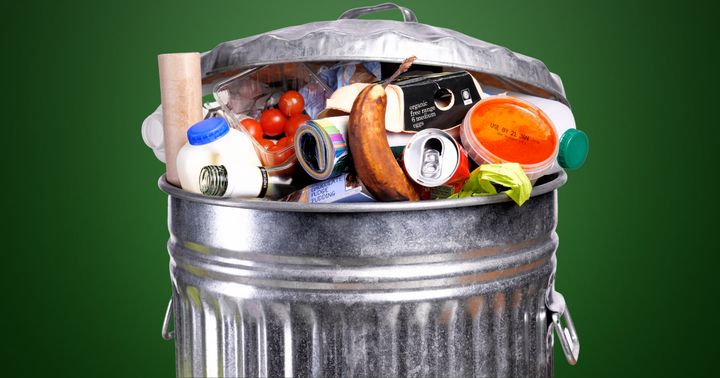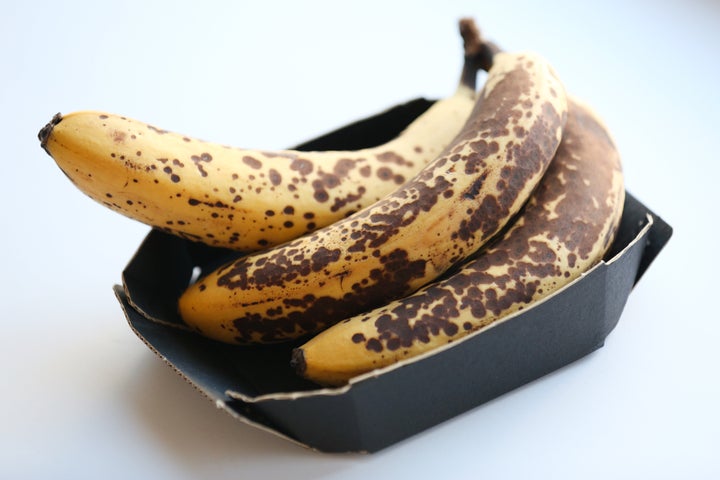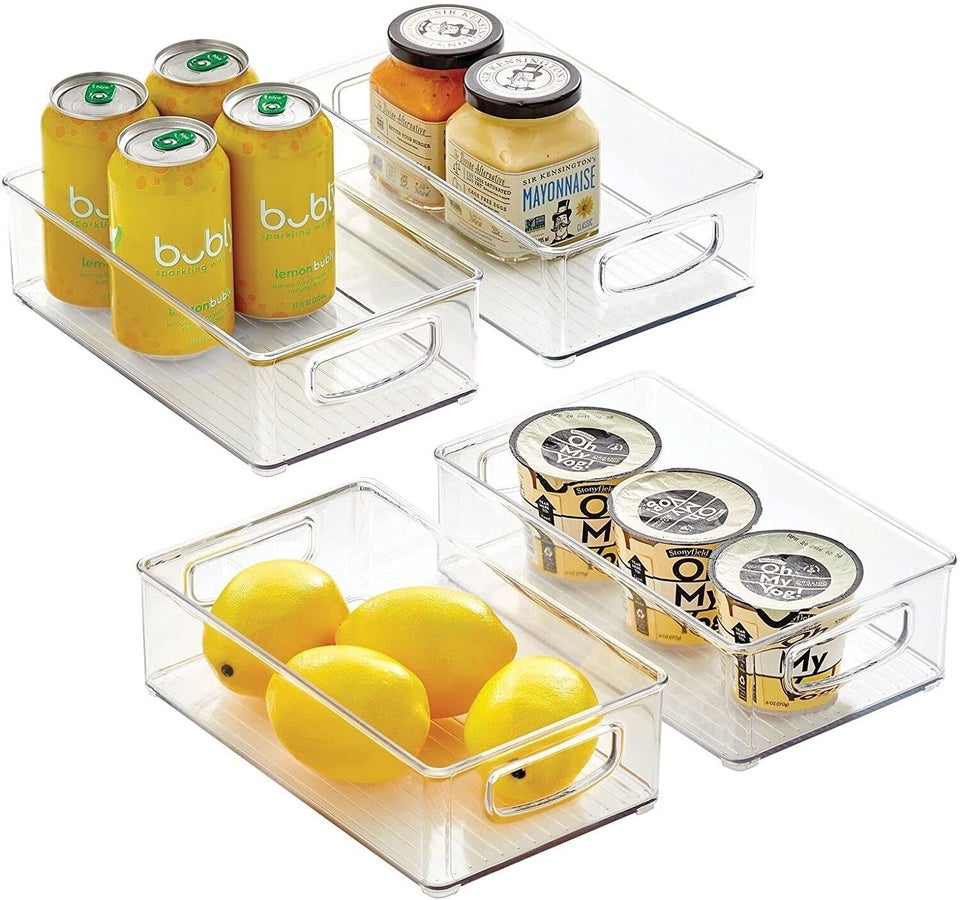
With food prices skyrocketing and the very food-centric holiday season upon us, it makes sense for budget-minded home cooks and shoppers to find ways to get the most mileage out of their weekly grocery hauls.
While shelf-stable groceries (like canned goods) are designed for longevity, fresh items like fruits, vegetables, meats and dairy products have an annoying tendency to spoil before they’re used, which can make it difficult to justify spending money on these ingredients (in spite of their health benefits and superior taste).
But with a basic understanding of how produce, dairy products and meat spoil, and a few simple storage safeguards, you can prolong the life of your perishable groceries and keep these nutritious, hearty and flavorful ingredients in your kitchen rotation.
Whenever possible, buy locally grown fruits and vegetables.
This isn’t just for clout. While farmer’s markets, CSAs and small groceries with direct connections to local farms often charge higher prices for produce than supermarkets, locally grown fruits and veggies stay fresh longer than imported versions, which can help to defend their prices.
“Shopping as locally as possible will help prolong freshness,” food scientist, recipe developer and cookbook author Tiffany Swan explained. “When your produce was harvested the day prior and you are buying it at a farmer’s market or food co-op, you know that it will last longer than food that has been in ships, trucks and distribution centers, since a good portion of the viable shelf life has been spent in getting the produce to you.”
Make sure your refrigerator is set to the proper temperature.
When it comes to keeping perishable groceries fresh, the refrigerator is your most important tool. Make sure your fridge is set to a level that meets food safety standards, chef, educator and recipe developer Sally Cameron explained.
“Food safety rules say that’s between 35°F and 40°F,” Cameron said. “If your refrigerator does not have a built-in digital readout, buy an inexpensive refrigerator [thermometer] to test it.”
And keep in mind that refrigerator door shelves often keep foods warmer than the rest of the fridge, since they tend not to be as well insulated.
Some produce is better stored at room temperature.
While refrigerating fruits and vegetables will extend their freshness, certain produce items prefer to be stored at room temperature. (You should know by now that you should never refrigerate a tomato.) A slightly warmer storage temperature keeps some fruits and veggies more flavorful and better-textured. Also, because refrigeration slows the process of decay, it helps to consider which fruits and vegetables start to break down on a cellular level faster than others.
Savannah Bradenfood, a scientist with Apeel, gives a shout-out to citrus fruits like oranges, limes and lemons as examples of those that take longer to rot.
“Fresh lemons, for example, can be stored on your counter for many weeks before [the decomposition] process starts to happen,” Braden explained.
In the case of starchy vegetables like potatoes, a cool (but not cold!) storage space keeps them fresh without compromising their texture.
“In terms of where to store, potatoes prefer to be cool versus cold, and refrigerators are cold,” Cameron said. “A cool pantry prolongs their life, as the starches convert to sugar more slowly, extending their life” for weeks or months. Refrigeration can make potatoes “last for a month or longer,” she added, but the flavor and mouthfeel might not be worth that extended lifespan.
Give leafy greens the chance to dry before storing them in the fridge.
Lettuce, kale and other salad greens are notorious for spoiling quickly, and a lot of that has to do with their somewhat contradictory reactions to moisture. “Grocery stores are notorious for ‘misting’ their produce with automatic water sprayers. The idea is to make the food look fresh and appetizing; however, it actually has the opposite effect and causes produce to degrade much faster,” explained Lisa Lotts, the recipe developer behind Garlic & Zest.
In order to remove the excess water from your greens, Lotts recommends “laying leafy greens like kale and lettuce out to dry for about 15 minutes and then wrapping them lightly in a paper towel before putting them back in the plastic bag. The paper towel will absorb excess moisture so the produce doesn’t go bad prematurely.”

Droplets of water on leafy greens can cause premature spoiling (which is why it’s also advisable to wait to rinse your greens until right before you plan to use them).
But here’s the contradictory part: Leafy greens actually shouldn’t be stored in a low-humidity refrigerator drawer, as a lack of moisture in the air will speed the wilting process. Instead, “the ideal setting for leafy greens is a higher-humidity environment,” Lotts said. Use the controls on your fridge to set a crisper drawer to higher humidity, and that will serve as an excellent storage spot for lettuce, kale, arugula, and fresh herbs to retain their crispness and flavor.
Bagged salads spoil more quickly than full heads of greens.
Speaking of salad greens, it’s often appealing to save time by picking up a bag of pre-rinsed and chopped greens. But if you want produce with longer-term freshness, bagged salads aren’t the way to go.
“It’s more work to buy a head of lettuce, wash it and dry it yourself,” Cameron noted. But this method will give you lettuce that often lasts longer and stays fresher.
Store fresh herbs the same way you’d store freshly cut flowers.
Fresh herbs offer home cooks an easy way to brighten up a dish, but opening up a crisper drawer only to find shriveled, wilted, browned leaves of basil, rosemary or thyme is a sadly common disappointment.
Lotts has an easy solution to the rotten herb problem. “For fresh herbs, snip the ends of the herbs with kitchen scissors and put them in a glass jar filled halfway with fresh water,” she said. “Then cover the herbs with a plastic vegetable bag from the grocery store and keep the fresh herbs on a shelf in the refrigerator. They will last for a week or more when you use this method ... it’s like keeping a bouquet of flowers alive.”

Keep ethylene-producing items separate from ethylene-sensitive produce.
There’s a great reason most refrigerators include more than one crisper drawer: Different types of produce have different storage needs, and certain fruits and vegetables can actively derail the freshness of their crisper-drawer neighbors. Specifically, you want to be wary of fruits and veggies that produce ethylene, an organic chemical that accelerates the ripening process.
Common ethylene-producing foods include apples, apricots, avocados, bananas (ripe), blueberries, cantaloupe, cranberries, figs, green onions, grapes, honeydew, kiwi, mangos, nectarines, papayas, peaches, pears, plums, potatoes and tomatoes, Cameron said.
When you store ethylene producers alongside non-ethylene-producing fruits and veggies that are particularly sensitive to ethylene (like leafy greens, berries, asparagus and carrots), the ethylene will cause the sensitive produce to spoil more quickly. It’s best to keep ethylene producers and non-ethylene producers in separate crisper drawers.
Store dairy and meat products in the coldest part of your fridge.
Because meat and dairy products count among the priciest items on any grocery list, there’s a lot of incentive to prevent these foods from spoiling before their time. When it comes to keeping dairy products and meat fresh in the fridge, it’s all a matter of location, location, location.
“Meat and dairy are pretty perishable. The best way to prolong the storage of these items is to store them in the coldest part of your fridge. Don’t put that milk in the door!” said Tiffany Swan, a professional chef and the food scientist behind Salt & Sage.
Swan also urges you to keep these foods in their original packaging. Introducing air and potential airborne microbes when transferring to another container is likely to shorten the shelf life. Also, she said, retail packaging is usually tested to make sure it maintains freshness.
